Perfect fruit cake recipe
A recipe for fruitcake with more fruit than cake, from Thomasina Miers.
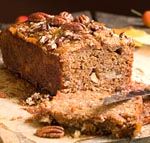
‘This cake was invented by Claire Ptak, an exceptionally talented pastry chef. I was so enraptured by the taste when I first tried it that when she put it in Leon: Baking and Puddings she named it after me. I have since baked it many times. Last Christmas, short of time for stir-up Sunday, I quickly whipped it up, and have since added flaked almonds, currants and orange zest to the recipe (and occasionally a splash of something stronger) to make it even more festive'
Tommi's more-fruit-than-cake cake (serves 8) Extract from Claire Ptak and Henry Dimbleby's Leon: Baking and Puddings (published by Conran Octopus)
Red wine and figs have a special affinity for one another and the spices in this recipe. The fig seeds create a wonderful popping sensation as they burst in your mouth.
Preparation time: 25 minutes Cooking time: 45 minutes
Ingredients 375ml red wine 375g dried figs, chopped 1½ teaspoons ground cinnamon Quarter teaspoon ground cloves 125g unsalted butter, cold 250g honey, plus extra for the top 1 free-range egg, briefly whisked 200g spelt flour 1½ teaspoons baking powder 1 teaspoon bicarbonate of soda
Method Heat the oven to 160˚C/325°F/gas mark 3. Line a 20cm [8in] square cake tin with baking paper. Put the red wine, figs and spices into a medium saucepan and bring to the boil. When the fruit has plumped up a little (about 5 minutes), remove the saucepan from the heat and allow to cool for 10 minutes. Stir in the butter and honey and leave for another 10 minutes. Stir in the egg.
Sift the flour, baking power and soda into a large mixing bowl. Pour the fig mixture over the flour mixture and stir just until mixed. Pour into the tin. Bake for about 45 minutes, or until a skewer inserted comes out clean. Allow to cool in the tin.
Sign up for the Country Life Newsletter
Exquisite houses, the beauty of Nature, and how to get the most from your life, straight to your inbox.
-
 Contact Country Life
Contact Country LifeHow to get in touch with Country Life.
By Country Life Published
-
 A Georgian vicarage that blends idyllic seclusion, village life and a simple commute to the City
A Georgian vicarage that blends idyllic seclusion, village life and a simple commute to the CityThe Old Rectory in Hawkhurst, Kent, is a delightful home inside and out. Penny Churchill takes a look.
By Penny Churchill Published
-
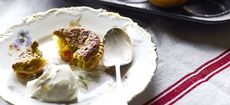 Summer pudding recipe: buttery pistachio tarts
Summer pudding recipe: buttery pistachio tartsThe very best pistachios might be costly, but they make a suitably sumptuous pudding.
By Simon Hopkinson Published
-
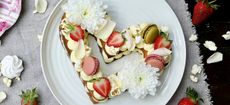 Recipe: Floral strawberry shortcake perfect for summer
Recipe: Floral strawberry shortcake perfect for summerNothing represents our glorious British summer quite like sweet and juicy strawberries.
By Melanie Johnson Published
-
 How to make hummingbird carrot cake, an traditional favourite with a twist
How to make hummingbird carrot cake, an traditional favourite with a twistCarrot cake, with a tropical twist from out kitchen garden cook.
By Melanie Johnson Published
-
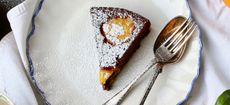 How to make chocolate-and-orange upside-down tea cake, with orange whipped cream
How to make chocolate-and-orange upside-down tea cake, with orange whipped creamSo much more than marmalade – our kitchen garden cook Melanie Johnson finds delicious things to do with oranges.
By Melanie Johnson Published
-
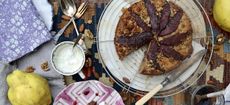 How to make quince-and-walnut crumble cake
How to make quince-and-walnut crumble cakeOur kitchen garden cook bakes quince-and-walnut crumble cake, a delicious autumnal pudding which will satisfy seasonal glut.
By Melanie Johnson Published
-
 How to make salted-caramel, apple and roasted-hazelnut galette
How to make salted-caramel, apple and roasted-hazelnut galetteA fail-safe French pudding recipe from our kitchen garden cook.
By Melanie Johnson Published
-
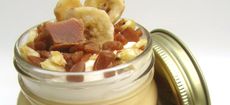 How to make Frances Quinn’s banoffee tumbler trifle
How to make Frances Quinn’s banoffee tumbler trifleTry this delicious pudding from former GBBO winner at your very own candlelit supper and 'Shine for ShelterBox.'
By Country Life Published
-
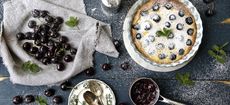 Perfect pud: Cherry clafoutis with kirsch compote
Perfect pud: Cherry clafoutis with kirsch compoteTry this speciality of the Limousin region.
By Melanie Johnson Published